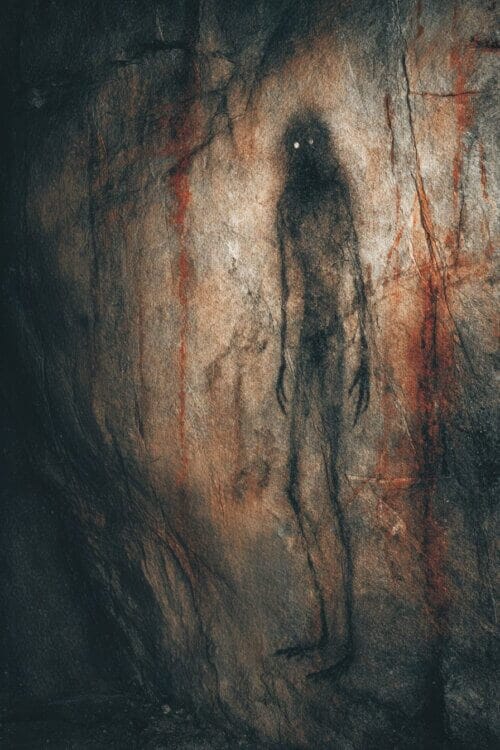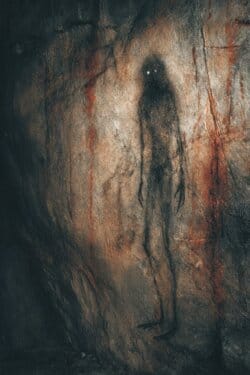
What We Found At Chauvet

Last time we discussed the Not-human hypothesis, and since then, a discovery has been made that has been linked to these ancient humanoids. Though this one is rather unique, as it shows us how Neolithic and Paleolithic humans might have viewed and interacted with them.
Instead of bones, this discovery came in the form of cave paintings, found in Chauvet Cave, a site in the Ardèche region of France, known for its rich collection of Paleolithic and Neolithic artwork. The paintings were discovered by a group of scientists providing yearly care to the cave’s fragile environment and artwork. A previously unexplored passage was discovered during the group’s tour, and feeling curious, they decided to investigate. Gaining entry proved difficult, however, as a pile of rubble had previously obstructed the entrance until a part of it had been dislodged, the running theory for why the passage suddenly appeared was that an earthquake which happened the week before opened a section previously sealed off by a cave-in. Because of this, the passage wasn’t able to be explored right away, and someone had to be prepped for entry at a later date. Eventually, a volunteer was found and equipped with a headlamp helmet and a bodycam. Once everything was ready, said volunteer was able to squeeze through the gap in the rubble.
Once the volunteer had gained entry to the space, they began to explore it with their headlamp, likely the first ray of light to fill the space in over 36,000 years. The passage itself was only about 1 kilometre long before stopping at a sudden narrow pit whose length extended beyond the range of the light. After noticing this, the explorer turned his attention to the walls, which were bumpy and curved, extending to about 16 feet high ending in a domelike shape; at first nothing of interest was to be found until they came across a flatter section of the wall and saw a series of previously undiscovered paintings. At first, each one was like those already found and studied in the cave, detailed depictions of stone age animals like Mammoths, Rhinos, and Bears. Then a different image was found among the others.
It looked like a man drawn with black charcoal lying sprawled out on the ground, his arms, and legs missing, with small red trails likely meant to be blood coming out from little stumps. Any further detail was hard to determine since, like all cave paintings involving humans, it was drawn in a very simplistic way, like how a child would draw a person.
A little gruesome, but not wholly surprising. Similar depictions of death had been found in caves before, but it was the second image that truly stumped the explorer. Not far from the first was another painting which depicted a tall humanoid with no visible legs and drawn in all black aside from its eyes, which were wide and had been painted white using Kaolin Clay. The figure also had two arms, one of which appeared to be holding a human limb, along with red streaks running down where the mouth should be. No other features were present on the figure. Not only was the whole thing slightly unnerving to view solely by torchlight, but the position of the figure made it look like the eyes were focusing on the viewer, even when moving.
The explorer, now feeling more than a little uneasy, quickly made his way out of the passage and told the others what he saw. At first, it was assumed the paintings had some religious or mythological context, but once news of the discovery was announced, and the footage from the explorer’s bodycam was published in a scientific journal; it was picked up by the Not-human community who connected it with the evidence of Homosapien predation for the species. If it truly signified what the community thought, then it also highlighted something else, how brutal the Not-humans had been during their lifetimes, such a thing had been hypothesised before, especially when looking at the behaviours of similar animals like Chimps. But seeing apparent concrete proof still felt a little shocking.
Not much else came of the discovery; it was mostly written off as nothing more than artistic expression by the scientific community, though it continues to be studied along with the other paintings. To the Not-human community, however, it is still seen as one of the biggest pieces of evidence of the species since the skull found in Laos, and continues to inspire speculation among them to this day. They are also left with one question: what other forms of evidence exist waiting to be found? And what would they reveal?


I’m enjoying the premise of your works, but I don’t find the way they’re written particularly engaging. Perhaps if you included recounts from the explorers, like interviews or notes. I just find it odd that it’s formatted like a science journal written by someone who’s studying this, but then you have moments of narration like: “The explorer, now feeling more than a little uneasy”. That would be a good point to instead, insert a transcript from the bodycam of the explorer reacting to his findings first-hand rather than have it explained to us, just as an example. That said, i’m interested to see where this goes.